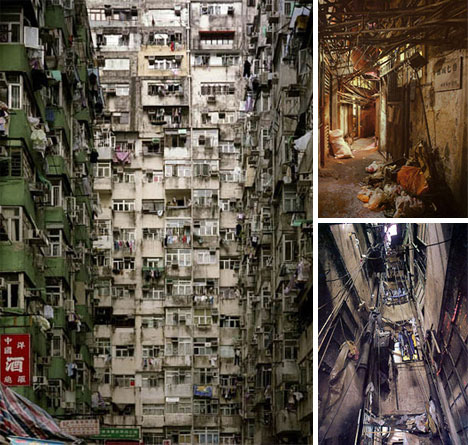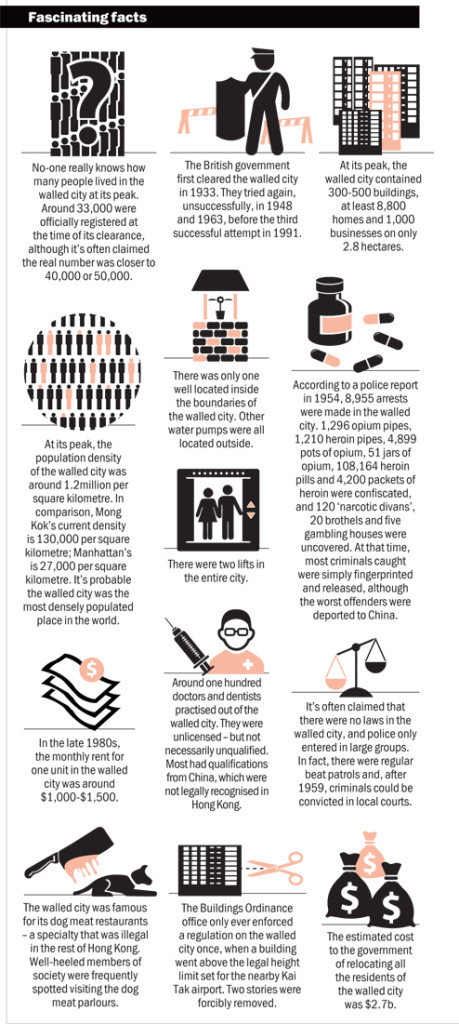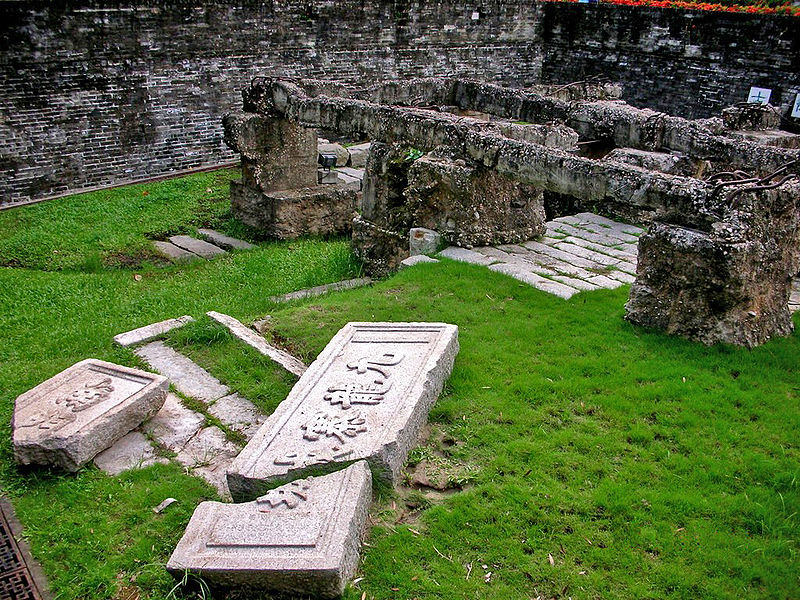 Once thought to be the most densely populated place on Earth, with 50,000 people crammed into only a few blocks, these fascinating pictures give a rare insight into the lives of those who lived Kowloon Walled City.
Once thought to be the most densely populated place on Earth, with 50,000 people crammed into only a few blocks, these fascinating pictures give a rare insight into the lives of those who lived Kowloon Walled City.
Taken by Canadian photographer Greg Girard in collaboration with Ian Lamboth the pair spent five years familiarising themselves with the notorious Chinese city before it was demolished in 1992.
The city was a phenomenon with 33,000 families and businesses living in more than 300 interconnected high-rise buildings, all constructed without contributions from a single architect.
Kowloon Walled City was not always a city,
It started life as a military fort with sturdy walls so as to keep an eye on the British in China. When Hong Kong was handed to the British it was kept separate, just outside but separate. At least until it was stormed whilst a Sir Henry Blake was in search of resistance soldiers in 1899. They found very little, instead they just claimed dominion over it, then left it alone. A little British box surrounded by China.
In the intervening time it grew old and dilapidated, collecting dust and squatters before having great swathes of it demolished so the stone could be used to extend an airport.

Then came World War II, at the end after Japan’s surrender China stated that it wanted to reclaim rights to the Walled City which prompted a huge rush of refugees fleeing to the place for Chinese protection, by 1947 there were 2,000 of them. In 1948 the British tried to drive them out but to no avail, afterwards the British adopted a ‘Hands-Off’ approach and left the Walled City in peace. A piece in which it thrived.
This was the last of government enforcement, the Chinese wanted rights to the city but didn’t have them, and the British just ignored it and focused on Hong Kong. It to all intents and purposes became an independent nation, an enclave of China. In this absence of governance the criminal underworld thrived. In just a few years the Chinese Triads, a very menacing group of criminals the equivalent to the American Mafia, had a stranglehold on the city, making it rife with crime and drugs. The only time the Hong Kong government had any jurisdiction there was to solve a murder and of course many attempted police raids on the many brothels, gambling parlours and opium dens operated by the Triads in the city.
Dense Population of Kowloon:

Remember all of this was in a tiny area, only 0.03km², it was an area with an extreme population density 187 times as large as Hong Kong’s, with a total of 1,255,000 people per km². However they learnt to pack them in, Kowloon Walled City reached a population of 33,000 persons and had to accommodate.
So they started building layers on top of each other. Rapidly Kowloon Walled City became a tall and restricted near-solid cube of building materials. So high did the streets get that the bottom levels were near clogged with waste and light rarely reached those depths.
So deplorable were the living conditions in the city that the Hong Kong authorities actually interfered, a rare thing indeed, and performed the very major, and expensive work needed to provide both water and electricity to the city, providing fluorescent lights for the permanently dark lower alleys along with the previously scarce clean water to all corners of the structure.

After the heavy work through the 1960’s and 1970’s there was still a crime problem, the Triads maintained such a grip that the Hong Kong police force could only enter in large groups for safety reasons. This had to stop, so a clean up was begun. From the end of the work in the 1970’s up to 1983 3,500 police raids were carried out, resulting in 2,500 arrest and 4,000 pounds (1800 kilograms) in seized drugs. In 1983 the police officer in charge of Kowloon, the area in which Kowloon Walled City resided, announced the crime rate to be under control.
The Triads grip was severely weakened, the city’s main problem now being the multitudes of unlicensed Doctors and Dentists acting in the city with no fear of prosecution. Performing risky, and in most cases completely wrong procedures on a daily basis. That threat however, was not so significant.
Kowloon Walled City through all this developed its own culture, similar to that of Hong Kong’s, most of the citizens were not involved in criminal activities, many operating businesses within the city, however it was still a seedy place.
“Here, prostitutes installed themselves on one side of the street, while a priest preached and handed out powdered milk to the poor on the other; social workers gave guidance, while drug addicts squatted under the stairs getting high.”
—Leung Ping Kwan, City of Darkness, p. 120
It could not last forever, whilst the crime rate was now manageable the British and Chinese found the place an ever more intolerable sore. Its sanitation far behind that of any Chinese settlement, especially Hong Kong. So in 1987 they announced the plans for its eventual demolition. $350 million was spent in compensating and relocating an estimated 33,000 people out of Kowloon, along with many forced evictions between November 1991 and July 1992.

Finally, after four months of planning the demolition began on the 23 March 1993 and was concluded in April 1994. Nothing is left of that tall and dark city. In its place a small park commemorates it and its shambling constructions.
We lost a unique, lawless city bursting and ramming against its invisible barriers, inside it operated the unique if unsanitary lives of thousands. The region of Kowloon is safer, cleaner and a lot plainer for the lack of it.
Are we better for that loss?
Originally posted 2016-02-15 14:43:35. Republished by Blog Post Promoter












